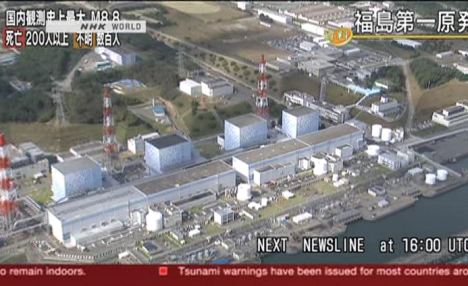

"The work cannot go ahead without the water shield because it would expose workers to dangerously high levels of radiation so this idea for the construction of a tank around one of the reactors is positive," he told DW. Hajime Matsukubo, secretary-general of the Tokyo-based Citizens' Nuclear Information Center, remains a vocal critic of the Japanese government's insistence on the need for atomic energy, but agreed that the NDF plan appeared to offer a number of benefits for the decommissioning process. There are still a lot of things to study as the attempt would be the first of its kind in the world." "We are still in the very, very early stages of the concept study. "I cannot say anything for sure yet," Yamana said. If it worked, however, then the same strategy could be deployed to help in the decommissioning of the remaining two damaged reactors at the facility. He emphasized, however, that the proposal was in the initial stages and no final decision had been taken.

NDF experts plan to construct a massive concrete tank arond one of the reactor buildings Image: Getty Images/C. "No radioactive materials would be swirling up underwater, so there would be almost zero impact on the outside," Yamana told the Asahi newspaper. The plan was presented to the government at a meeting in Iwaki, just south of the plant, in early September, during which NDF President Hajimu Yamana explained the benefits. That, in turn, would permit experts to deploy robots to more closely examine the condition of the reactor, as well as the fuel that has escaped and pooled in the building's basement levels. The water would act as a shield to prevent radiation from escaping into the surrounding environment and give engineers more space, in which to operate heavy equipment to dismantle and remove the outer shell of the reactor building. In their latest annual strategy report on progress at the plant, experts at the Nuclear Damage Compensation and Decommissioning Facilitation Office (NDF) have proposed the construction and filling with water of a massive concrete tank to completely enclose one of the reactor buildings.
#Japan reactor meltdown update series#
They warn, however, that the situation at the plant - on the northeast coast of Japan- remains precarious more than a decade since three of the six reactors suffered meltdowns after an offshore earthquake of magnitude 9 triggered a series of powerful tsunamis. Nuclear experts pondering the safest way to decommission the three crippled reactors at the Fukushima Daiichi atomic energy plant have devised a new plan to recover highly radioactive debris at the site, with even anti-nuclear campaigners giving the proposal their qualified support.


 0 kommentar(er)
0 kommentar(er)
